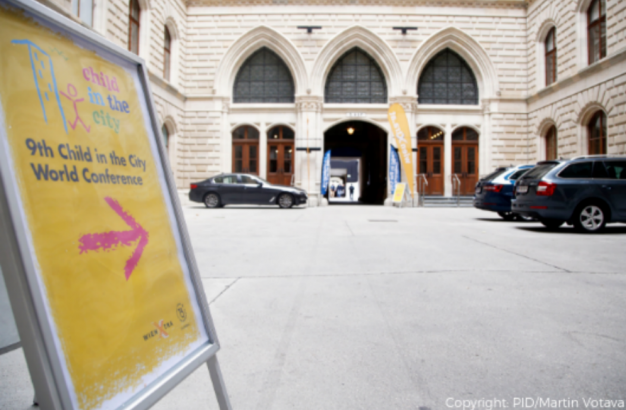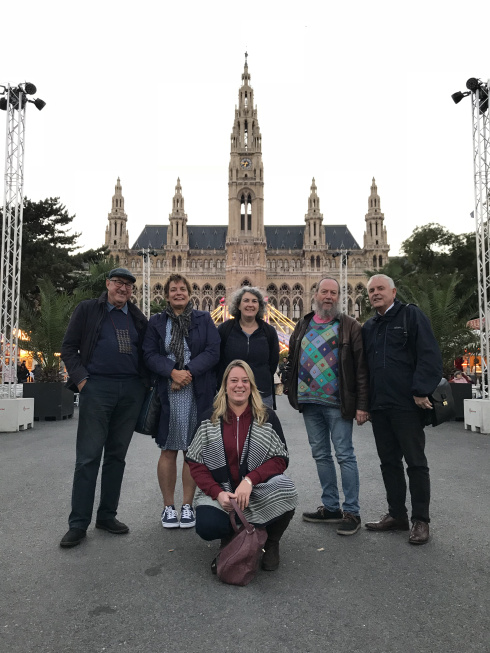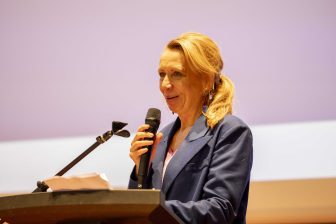
Child in the City: Risk, consultation and the future
Robin Sutcliffe the founder and chair of Sutcliffe Play shares his reflections on the 2018 edition of the Child in the City World Conference.
At the opening session of Child in the City (CitC) we were told that there were more than 350 paid up delegates and of those 100 were presenters. It also transpired that over half of the delegates came from outside Europe! A truly international conference justifying the word “World” in its title. As one of the founding sponsors in 2002, I was delighted that what we had imagined as essentially a European event had become so truly international and expanded to such numbers.
At the Conference dinner on the last night, I was asked if I would like to say a speak at the closing session and, having already had a few thoughts about the conference, I agreed. As Chair of Sutcliffe Play and a founder sponsor, I was, as usual, both humbled and flattered to have been asked to speak once again at a CitC Conference and felt that what I had said might usefully form the basis of a blog. So here it is!
A little history
I began by acknowledging the three people who put the first CitC Conference together. The original concept came from the Chairman of the Federation of Play Industries (FEPI), a Belgian business man from Bruges called Johan Verbeke, who tragically died in a car accident a few months before the first Conference in Bruges. His vision was that the commercial sector should demonstrate responsibility and credibility by initiating a really serious conference contributing to the theory and practice of play. He suggested that we should have an independent Scientific Committee to identify the topics and speakers on whom the Conference should be based. He proposed that this should be led by Jan van Gils who was at that time Director of the UNESCO funded Child Friendly Cities movement in Brussels. Johan Haarhuis was invited to organise the event and is now the President of the CitC Foundation. I felt that it would be appropriate to remember and thank these three people for what they had achieved.
Risk
During the Conference, I was fascinated by the fact that the importance of risk in play was no longer an issue that need to be advocated. It still is referred to in most discussions and presentations that I went to, but its importance now seems to be accepted without question.
To me it is wonderful that, previously having launched the Play Safety Forum Position Statement at the very first conference in Bruges in 2002, which led to the establishment of the European Play Safety Forum and the subsequent production of a European Statement, and where in 2008 we had also launched Managing risk in play , introducing the concept of Risk Benefit Assessment (RBA) and finally at the 2016 conference in Ghent had formed the International Play Safety Network (IPSN), should now have a conference where the need for risk in children’s play was assumed and a significant thread throughout the conference. In a sense, this could be seen as a major achievement for children in its own right. It is also interesting that IPSN has been silent for some time, hopefully, a sign that major issues for the risk lobby have, for the time being, receded.
Consultation
Another thread that ran through the Conference was participation, consultation and research. Again, it was present in many of the sessions I attended, but whereas with risk the assumptions seemed similar and in harmony, I felt that preconceptions about consultation varied widely. I think that everyone assumed that they would be singing from the same hymn sheet, but in fact, they were not. It emerged to me that there are a number of questions that need to be addressed in relation to this topic.
- Should children be engaged in dialogue where we cannot be reasonably assured of delivering on their views and wishes?
- If we cannot or do not have the opportunity to deliver on their messages or our findings, then what message does this give them about participation?
- Where does this leave us as professionals in a field where our knowledge is often in conflict with children’s views and opinions?
There are probably more questions to be asked and certainly need for more dialogue and debate about this. Maybe it should be a thread of a future conference.
A future direction?
Something that has struck me a number of times in the conference has been the way that play is a universal trait and the way that the power of play crosses geographical and cultural boundaries. Children play the same games and give the same cues globally. It seems to me at this time, when the world feels increasingly divided and fragmented as never before, when war is creating diaspora of families and refugees, when countries are building barriers, both physically and culturally, in order to protect themselves from inevitable change, play could be one of the few ways in which both children and adults could be brought together, a source of cooperation and that through play people could rediscover their common humanity, their empathy. One way in which we could break down the very barriers that others are building up, and it struck me that this was an aspect of play that Child in the City could deliberately encourage and emphasise; perhaps a future direction and ambition.
For me, it was an excellent conference, not just the quality of the keynote speakers and the conference presentations, new thoughts and challenges, but of course the networking as ever!

This post originally appeared on Grumpy Sutcliffe and is republished with permission and thanks. Feature Image: Copyright PID/Martin Votava.




